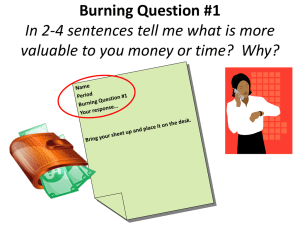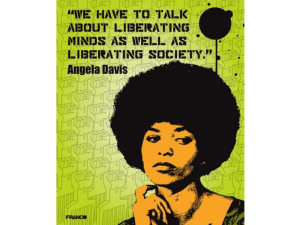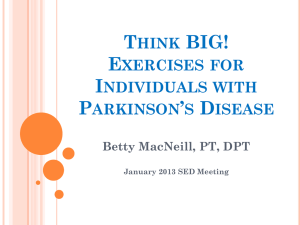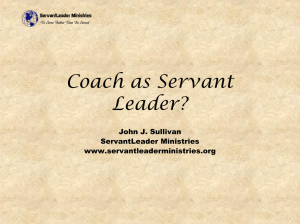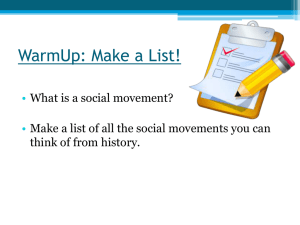exercise techniques for reducing symptoms of
advertisement
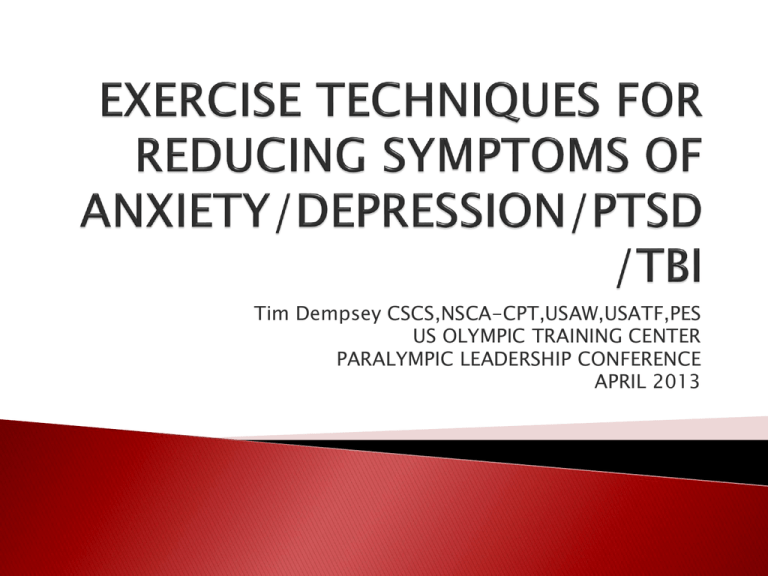
Tim Dempsey CSCS,NSCA-CPT,USAW,USATF,PES US OLYMPIC TRAINING CENTER PARALYMPIC LEADERSHIP CONFERENCE APRIL 2013 BA Sociology-St. Ambrose University 2 semesters of M.Div- Emory University - Extensive social work experience prior to fitness career - Strength and Conditioning Coach/Track Coach at 2 universities in Puebla, MEXICO for 1994 to 2000 - Spanish language webinars for SpeedisCool.com and regular presenter at national coaching conferences throughout Mexico - Presently personal trains 24 hours weekly, 8 hours of that with TBI and Paralympic Athletes; leads 2 hours weekly of VA Move Group, 10 hours weekly with elite high school/college/post collegiate athletes in addition to staff supervision Elliptical, treadmill, fixed selectorized machine Pro- user friendly Con- repetitive, non stimulating Tough Mudder Marathon Triathlon etc. Pro- easy to find events Con- not for everyone Cross Fit Whatever infomercial is out there Movement Awareness- series of movements arranged to allow participant to gain a better awareness of changes within their body, such as what areas may be more tense than others Pro- diverts attention to movements of body, easy to do anywhere Con- sometimes frustrating to those with limited body awareness Similar to Fendenkreis with slightly more emphasis on healing structural imbalances Joint mobilization techniques Pro- feels good Con-unsure about long term effects Alternate nostril Curled tongue Deep breath Benefits we have observed in our program participants include decreased pain, improved sports performance, improved range of motion, balance, posture, mental focus and emotional stability. Participants report decreased anxiety levels, decreased depression and improved self-esteem. Traditional movement patterns (squat/lat pull/pull ups/bench press, etc.) are all good exercises, however they may exacerbate problems in certain populations. The familiarity of these movement patterns also encourages the exerciser to go through the movement in “auto mode.” Cross patterning movements require more body awareness and focus, and they enhance the coach/client interaction. Cross Patterning: Physical movement that involves crossing the midline of the body, using the upper and lower body, or right and left side separately Definition from Promislow, Sharon. Making the Brain/body Connection - “Each brain hemisphere controls the opposite side of the body. So by intentionally moving an opposite arm and leg across the midfield, we fire off both brain hemispheres at the same time, creating and myelinating better neural connections over the corpus collosum.” p 103 Paraphrasing from Suzana Zuzan, Prague Institute of Rehabilitation: Developmental movement patterns are wired in our DNA, and when we correctly activate those patterns, the body immediately relaxes and movement becomes more fluid. A fundamental energy therapy technique, homolateral patterning exercises are a series of movements that encourage your body's energies to cross over from one side of the body to the other. Walking, or marching in time with your arms swinging freely beside you, are examples of movements that enable your body to maintain its natural balance. Read more: http://www.livestrong.com/article/490133-homolateral-patterningexercises/#ixzz1pyvZvMBI Anatomy Trains 2nd Edition by Thomas W. Myers Coyle, Daniel. The Talent Code: Greatness Isn't Born. It's Grown. Here's How. New York: Bantam, 2009. Print. Dolen, Carolyn E. Brain Injury Rewiring for Loved Ones: A Lifeline to New Connections. Enumclaw, WA: Idyll Arbor, 2010. Print. Feldenkrais, Moshe. Awareness through Movement: Easy-To-Do Health Exercises to Improve Your Posture, Vision, Imagination, and Personal Awareness. New York: Harper and Row, 1977. Print. Hanna, Thomas. Somatics: Reawakening the Mind's Control of Movement, Flexibility, and Health. Cambridge, MA: Da Capo Life Long, 1988. Print. Hoge, Charles W. Once a Warrior, Always a Warrior: Navigating the Transition from Combat to Home--including Combat Stress, PTSD, and MTBI. Guilford, CT: GPP Life, 2010. Print. Promislow, Sharon. Making the Brain/body Connection: A Playful Guide to Releasing Mental, Physical & Emotional Blocks to Success. West Vancouver, B.C.: Kinetic Pub., 1998. Print. Ratey, John J., and Eric Hagerman. Spark: The Revolutionary New Science of Exercise and the Brain. New York: Little, Brown, 2008. Print. Effect of educational kinesiology on static balance of learning disabled students http://www.ncbi.nlm.nih.gov/pubmed/3211692 http://www.livestrong.com/article/490133-homolateral-patterning-exercises/ www.riekes.org Tim Dempsey en Facebook tdempsey@riekes.org



